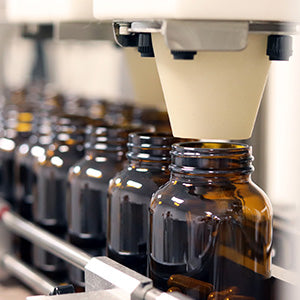5 Dangerous Chemicals in Sunscreen

Your skin is the largest organ of your body, yet few people realize its importance for their health. While keeping your heart, liver, and kidneys functioning properly is crucial, so is protecting your skin from radiation and harsh environmental contaminants. Now, you're probably already thinking about sunscreen, the leading product in this regard, which helps to protect the outer layer of your skin from the damaging effects of UV radiation. Conventional sunscreen, however, contains a number of chemical ingredients that may actually be harmful to your health. Organic sunscreen is the ideal choice, as it only contains natural ingredients and includes no chemicals or other dangerous substances.

Natural Sunscreen Tips: Avoiding Toxic Sunscreen Ingredients
Length: 9 minutes
5 Dangerous Chemicals in Sunscreen
The overall reason I recommend organic sunscreen is because of the chemicals contained in conventional sunscreen. Most sunscreens sold today are chemical concoctions that have been linked to a number of health maladies. Here's a list of the 5 common chemicals in non-organic sunscreens and their health effects. Upon seeing the plethora of negative health consequences associated with non-organic sunscreen, you’ll see why I only recommend organic varieties.
1. Avobenzone
Avobenzone is a primary agent in commercial sunscreens due to its effectiveness in absorbing a wide range of ultraviolet (UV) rays, specifically the type that is known to cause sunburn. It's been considered a relatively safe chemical, but recent research suggests otherwise.
Avobenzone degrades in the sun, resulting in the release of free radicals that may actually increase the risk for cancer.[1, 2]Free radicals are also known to accelerate skin aging and research has also tied it to a slew of allergies.[3]
2. Fragrance
Sunscreen is often injected with a variety of artificial fragrances as a means of making the product more appealing and tolerable to the senses. The list of aroma-producing chemicals used for this purpose is enormous — over 1,500 — and you'll rarely see the actual chemical name of a fragrance on a label, as many chemicals are grouped together under the umbrella term "artificial fragrance." Cancer, nervous system disorders, allergies, and birth defects are some of the concerns that have been linked to artificial fragrance.[4] It shouldn't be surprising that an increasing number of public places are now banning the use of fragrances.
3. Oxybenzone
Oxybenzone and avobenzone function in similar ways, and both are found in the majority of commercial sunscreens. While both absorb the sun’s rays so they don’t penetrate the skin, oxybenzone is actually more toxic than avobenzone. This chemical may actually be behind the increased rates of melanoma, the skin cancer that most people are attempting to avoid by using sunscreen! Oxybenzone has been found to lower the birth weight of girls whose mothers' bodies had high exposure levels. It's also linked to allergies, hormone disruption, and cell damage.[5, 6, 7]
4. Parabens
Parabens are commonly used as preservatives in sunscreen as well as a variety of personal care and beauty products. There are 18 different varieties, and you can easily spot them on most labels because they all contain the word "paraben" in their chemical nomenclature. What makes them dangerous is that they're estrogen disruptors. Parabens have been associated with infertility, abnormal development of the testes, obesity, asthma, allergies, benign tumors of the uterus or digestive tract, and breast cancer.[8]
5. Vitamin A
Considering that it is a necessary nutrient, it might seem surprising to see vitamin A listed as a concern. The surprising truth is that when vitamin A — often in the form of retinyl palmitate — is exposed to UV light, it creates free radicals that may actually increase cancer risk. Daily use of retinyl palmitate by a pregnant woman may also be toxic to the developing fetus. It has been linked to brain swelling, developmental toxicity, cellular changes, and organ toxicity. Retinyl palmitate produces excess reactive oxygen species which can lead to cell death, and the compound may also be involved in cardiovascular disease. [9]
The Solution: Organic and Chemical Free
Why would anyone who knows of the health risks posed by non-organic sunscreens ever use them? They pose incredible health risks, possibly contributing to the very disease they're supposed to protect against. The only sane way to protect yourself from the sun's harmful effects is by using a sunscreen that's made from natural materials. Please do yourself and your skin a favor by slathering only organic products on your body.
References (9)
- Earth Working Group (EWG). "Avobenzone." EWG. Fact Sheet.
- Karlsson I, Hillerström L, Stenfeldt AL, Mårtensson J, Börje A. "Photodegradation of dibenzoylmethanes: potential cause of photocontact allergy to sunscreens." Chemical Research in Toxicology. November 2009. doi: 10.1021/tx900284e.
- Kockler J, Robertson S, Oelgemöller M, Davies M, Bowden B, Brittain HG, Glass BD. "Butyl methoxy dibenzoylmethane." Profiles Drug Subst Excip Relat Methodol. 2013;38:87:87-111. doi: 10.1016/B978-0-12-407691-4.00003-4.
- Earth Working Group (EWG). "Oxybenzone." EWG. Fact Sheet.
- do Nascimento DF, Silva AC, Mansur CR, Presgrave Rde F, Alves EN, Silva RS, Ricci-Júnior E, de Freitas ZM, dos Santos EP. "Characterization and evaluation of poly(epsilon-caprolactone) nanoparticles containing 2-ethylhexyl-p-methoxycinnamate, octocrylene, and benzophenone-3 in anti-solar preparations." Journal of Nanoscience and Nanotechnology. September 2012. PMID: 23035447.
- Cameron GJ Hayden, Michael S Roberts, Heather AE Benson. "Systemic absorption of sunscreen after topical application." The Lancet. September 2, 1997. doi:10.1016/S0140-6736(05)62032-6.
- Environmental Working Group (EWG). "Parabens. EWG. Fact Sheet.
- Crinnion WJ. Toxic effects of the easily avoidable phthalates and parabens." Alternative Medicine Review. September 15, 2010. PMID: 21155623.
- Earth Working Group (EWG). "Retinyl Palmitate (Vitamin A Palmitate)." EWG. Fact Sheet.
†Results may vary. Information and statements made are for education purposes and are not intended to replace the advice of your doctor. If you have a severe medical condition or health concern, see your physician.

Dr. Edward Group, DC
FOUNDER | HEALER | ADVOCATEDr. Group, DC is a healer and alternative health advocate, and an industry leader and innovator in the field of natural health who is dedicated to helping others. He is a registered doctor of chiropractic (DC), a naturopathic practitioner (NP), and proud alum of Harvard Business School and MIT Sloan School of Management. Dr. Group, DC is the founder of Global Healing – a mission and vision he has shared through best-selling books and frequent media appearances. He aims to spread his message of positivity, hope, and wellness throughout the world.










